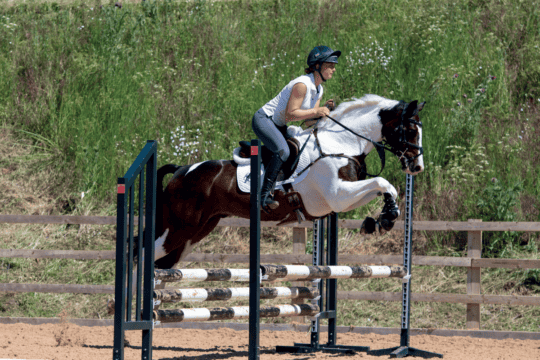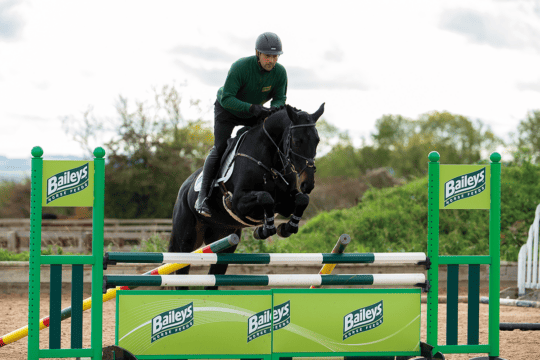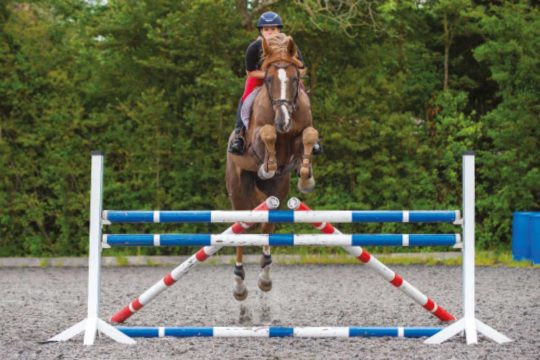-
Riding Schooling and Training
-
Health and Veterinary
-
Management
-
Mind Matters
-
Buying and Selling
-
Insurance Advice
FAQs
Featured Professional

Tim Stockdale
Tim is one of the country's foremost showjumpers and trainers, having represented Great Britain on over 50 occasions. He is a board member of British Showjumping and has served as Chef d'Equipe of the British team.
Want to start tackling bigger fences with your horse? Tim Stockdale helps you progress safely and with confidence
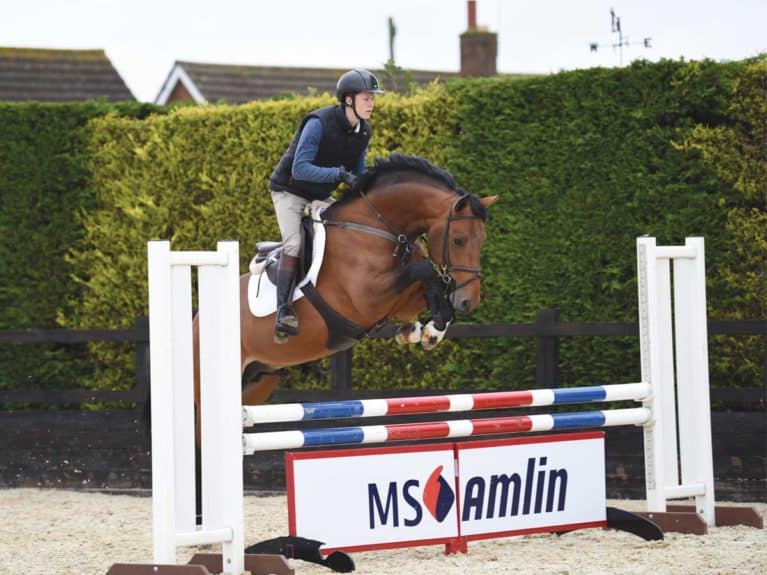
Jumping bigger than you or your horse are used to can be a nerve-racking experience. What if you’re not ready? What if your horse isn’t ready? And how high is too high for you both?
Remember that jumping big fences isn’t everything – good technique is far more important. However, there are situations when you might want to challenge yourself or your horse – for example, if you’ve been jumping at the same level for a while and want to try moving up, or if you’re bringing on a young or inexperienced horse and would like to progress his training.
A failsafe plan
It’s important to take a safe, structured approach when building height. There’s a great exercise that will help you do this and you don’t need to be an expert to use it successfully. It’s so structured that not a lot can go wrong and all the right things you should be doing will start to happen subconsciously.
Top tip – Whatever you’re doing with your horse, be consistent. When training horses, it’s the key to being successful.
It starts with the basic stepping stones, then builds up in height and width with the support of ground poles. Then, once you’ve reached the height you want to achieve, the support is gradually taken away, leaving you jumping one decent-sized fence with just a single ground pole for guidance.
As well as building height, this exercise helps…
- create even rhythm and tempo, and encourages your horse to repeat it consistently so it becomes a habit. Then, whenever he approaches a fence, even if the ground poles aren’t there, he’ll maintain the same rhythm and tempo because it’ll come naturally to him
- you focus on what’s happening underneath you and on the approach, and not so much on the fence – it’s your job to approach the fence with rhythm and balance, and your horse’s job to jump it
- build your horses’ confidence because the approach and take-off is consistent every time, and he’ll always reach a good spot for take-off
- you really tune in to your horse so you can feel exactly what he’s doing, and react quickly and appropriately to it. It helps you plug your mind into your horse’s, so his legs almost become your legs – similar to how you’re able to walk without thinking about what you’re doing with your feet.
It’s a simple exercise, but it’s effective in many ways, so turn over to find out how to ride it.
Top tip – Never jump on your own, always have somebody with you. It can be anyone, they don’t necessarily need to be horsey.
A structured approach to jumping bigger fences
Stage 1
Start with a pole on the floor between the wings – you don’t need to have a fence up to begin with. On the approach, place three more poles on the ground, with one stride (7m) between each. The poles will help you establish a rhythm, and you’re also aiming for good balance and an even tempo. Make sure you ride your horse straight and keep your seat out of the saddle a little so it doesn’t have too much contact with your horse. Once you’ve achieved this and can ride over the poles smoothly it’s time to move on to the next stage.
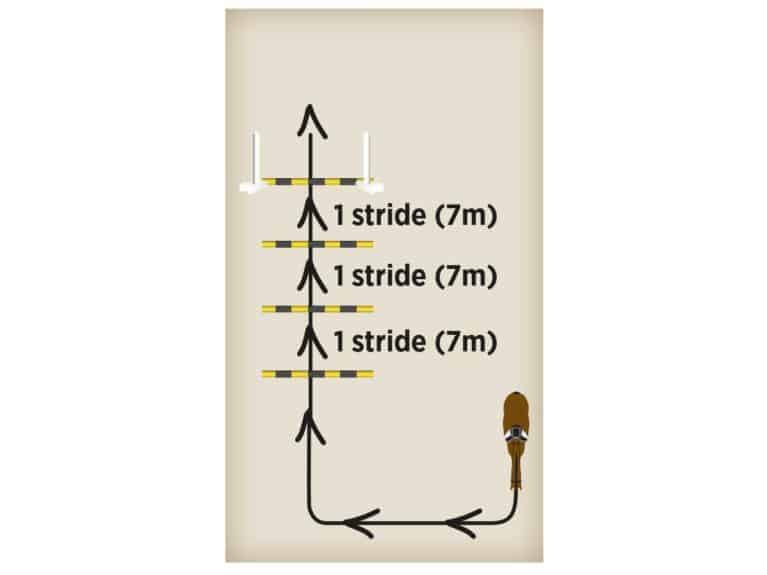
Stage 2
Next put up a cross-pole to replace the pole on the ground between the wings. It doesn’t need to be large, choose a height you’re comfortable with. Don’t change anything about the way you approach it, ride it in exactly the same way you did the poles. Your horse shouldn’t speed up to it because when this happens things go wrong – his strides will get longer, then when he reaches the fence he’ll be too close and have to put a dramatic short stride in.
When you’re walking towards a step, you don’t speed up, you maintain the same speed, rhythm and balance. Jumping is just the same.
Stage 3
Turn your cross-pole into a small upright – again at a height you’re comfortable with. Nothing else changes, even though the fence is bigger.
Stage 4
Put the upright up to a slightly more challenging height. Remember to concentrate on keeping an even, balanced approach and leave the jump to your horse.
Stage 5
Lower the upright a little and put a back rail on it to create an oxer. Maintain the same approach.
Stage 6
Once you’ve reached the height or width you’re aiming for and your horse is jumping confidently, it’s time to start stripping away the poles on the approach. To start with, take out the ground pole nearest the fence – this means that once you’re over the final ground pole, you have three strides until the fence. Keep the rhythm, balance and tempo the same.
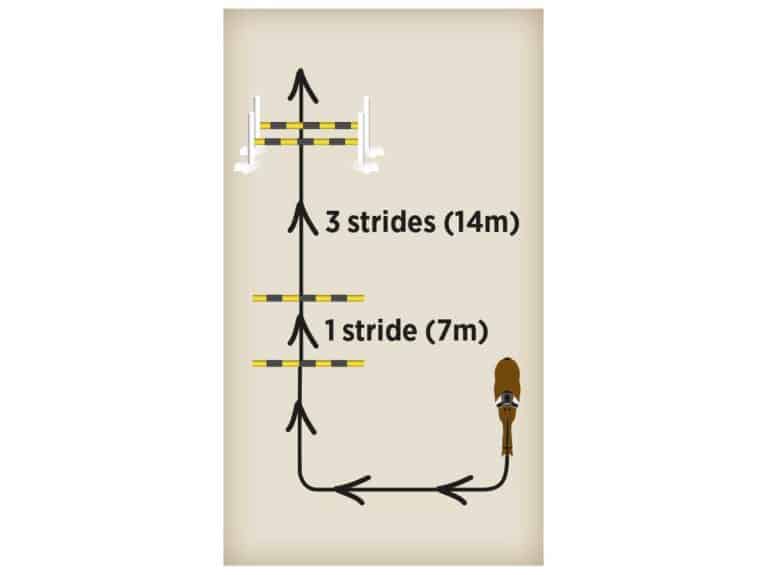
Stage 7
Take out the ground pole nearest the fence so there’s only one remaining. This time, once you’re over the pole there will be five strides until the fence. There’s more room for error here, so count how many strides you get between the pole and the fence. If you get five even ones, you’ve nailed it. But if you have six your strides are too short and if you get four they’re too long and will need adjusting.
Top tip – As well as building height and width, this exercise is good for introducing things such as fillers and water trays. Build up to the height you want and once your horse is comfortable over the fence, you can put the new obstacle in.
Hold back the help
Many riders try to help their horses too much. Remember that once you’ve got your horse to the fence, the rest is up to him. If he makes a mistake, that’s fine, he’ll learn from it. Just come again without changing anything and let him have another try.
Potential problems
One of the main problems people run into with this exercise is that when most of the poles have been taken away they forget to count the strides to the fence. If you forget to do this and don’t know how many strides it took you to get there, how do you know whether you’ve got it right or need to adjust your canter? Counting really helps to get the correct striding locked into your brain. To make sure you remember to do it, count them out loud.
The other common issue is that when fences get bigger, riders tend to tense up and over-ride. There’s no need to push more to a larger fence – the ground pole in this exercise would stay in the same place whatever the size of the jump. As long as you have an active canter, good rhythm and balance, and an even tempo, you’ll master any size fence.
How high can you go?
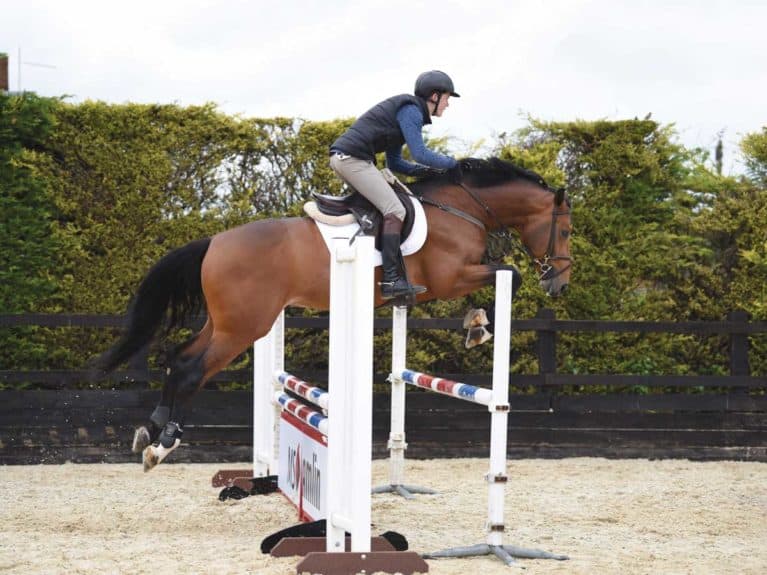
Knowing how far to push your horse is tricky – you basically need to test him. It’s always best to creep the height up in small increments. The only way you can tell whether he’s ready to go further is by judging his confidence – if he feels like he’s keen and finding it easy, try for a bit more, but if he doesn’t feel very confident over it, reduce the height a little for a while.
It’s important not to push for too much too soon. Once you’ve got a little higher or wider and your horse has jumped it well, call it a day. If you feel he has scope to go higher, try for a little more in your next session.
Watch how to ride Tim’s height-building exercise here.



